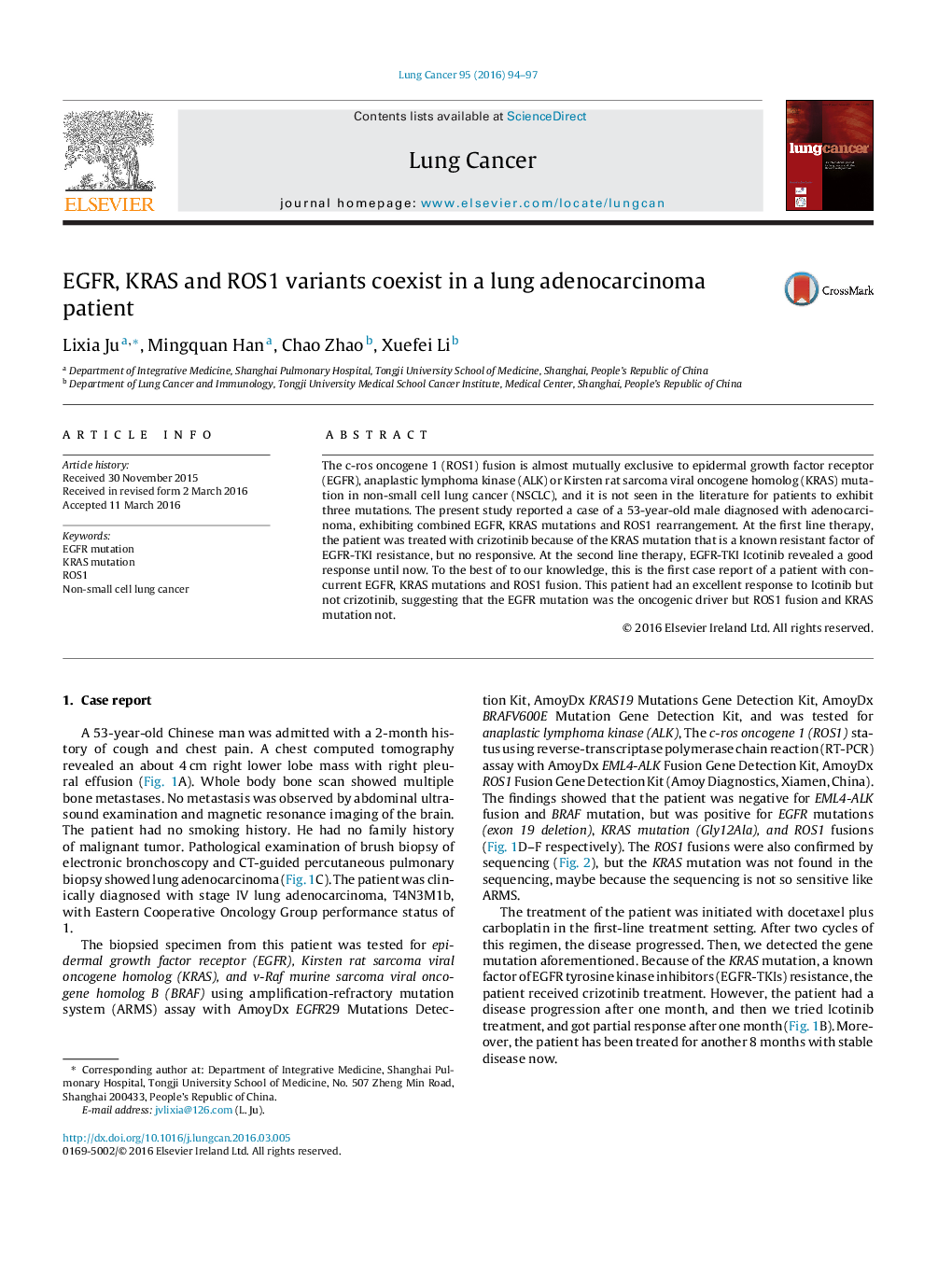| Article ID | Journal | Published Year | Pages | File Type |
|---|---|---|---|---|
| 2140428 | Lung Cancer | 2016 | 4 Pages |
•It’s the first time to report EGFR, KRAS and ROS1 variants coexisted in a patient.•This lung adenocarcinoma patient benefited from Icotinib but not crizotinib.•It must be taken into account that the mutations can occur in combination.•This phenomenon may influence the clinical outcome and require different therapy.
The c-ros oncogene 1 (ROS1) fusion is almost mutually exclusive to epidermal growth factor receptor (EGFR), anaplastic lymphoma kinase (ALK) or Kirsten rat sarcoma viral oncogene homolog (KRAS) mutation in non‐small cell lung cancer (NSCLC), and it is not seen in the literature for patients to exhibit three mutations. The present study reported a case of a 53-year‐old male diagnosed with adenocarcinoma, exhibiting combined EGFR, KRAS mutations and ROS1 rearrangement. At the first line therapy, the patient was treated with crizotinib because of the KRAS mutation that is a known resistant factor of EGFR-TKI resistance, but no responsive. At the second line therapy, EGFR‐TKI Icotinib revealed a good response until now. To the best of to our knowledge, this is the first case report of a patient with concurrent EGFR, KRAS mutations and ROS1 fusion. This patient had an excellent response to Icotinib but not crizotinib, suggesting that the EGFR mutation was the oncogenic driver but ROS1 fusion and KRAS mutation not.
